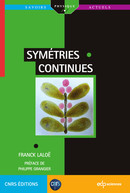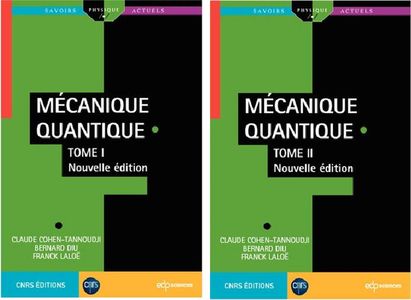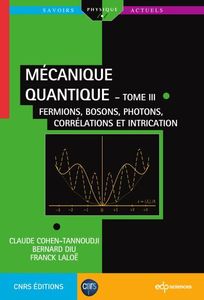Quantum mechanics
Various quantum effects are studied, in particular generalizations of the Hong-Ou-Mandel experiment to a larger number of particles, as well as non-local effects in spin Bose-Einstein condensates. A modification of quantum mechanics combining the dBB (de Broglie-Bohm) approach with the ideas of CSL (continuous spontaneous localization) has been proposed.
But most of F. Laloë’s effort by during the last two years has been put in the writing of a third volume of the Quantum Mechanics book with Claude Cohen-Tannoudji and Bernard Diu, as well as of the second edition of the book “Do we really understand quantum mechanics?”. Both should be published in 2017.
Selected publications
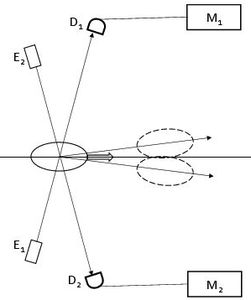
The outcomes of measurements in the de Broglie–Bohm theory
C. R. Physique 22(1):99-116 (2021)
Tastevin G., Laloë F.
Within the de Broglie–Bohm (dBB) theory, the measurement process and the determination of its
outcome are usually discussed in terms of the effect of the Bohmian positions of the measured system S. This
article shows that the Bohmian positions associated with the measurement apparatus M can actually play a
crucial role in the determination of the result ofmeasurement. Indeed, inmany cases, the result is practically
independent of the initial value of a Bohmian position associated with S, and determined only by those of
M. The measurement then does not reveal the value of any pre-existing variable attached to S, but just the
initial state of the measurement apparatus. Quantum contextuality then appears with particular clarity as a
consequence of the dBB dynamics for entangled systems.
arXiv:2102.02519
DOI : 10.5802/crphys.81
Keywords: Quantum measurement – de Broglie-Bohm theory.

A model of quantum collapse induced by gravity
Eur. Phys. J. D 74, 25 (2020)
Laloë, Franck (LKB)
We discuss a model where a spontaneous quantum collapse is induced by the gravitational interactions, treated classically. Its dynamics couples the standard wave function of a system with the Bohmian positions of its particles, which are considered as the only source of the gravitational attraction. The collapse is obtained by adding a small imaginary component to the gravitational coupling. It predicts extremely small perturbations of microscopic systems, but very fast collapse of QSMDS (quantum superpositions of macroscopically distinct quantum states) of a solid object, varying as the fifth power of its size. The model does not require adding any dimensional constant to those of standard physics.
hal-02483564
DOI : 10.1140/epjd/e2019-100434-1
Keywords: Quantum foundations – Quantum theory.

Quantum collapse dynamics with attractive densities
Phys. Rev. A, 2019, 99 (5):052111
Laloë, Franck (LKB)
We discuss a model of spontaneous collapse of the quantum state that does not require adding any stochastic processes to the standard dynamics. The additional ingredient with respect to the wave function is a position in the configuration space which drives the collapse in a completely deterministic way. This new variable is equivalent to a set of positions of all the particles, i.e., a set of Bohmian positions, which obey the usual guiding equation of Bohmian theory. Any superposition of quantum states of a macroscopic object occupying different regions of space is projected by a localization process onto the region occupied by the positions. Since the Bohmian positions are well defined in a single realization of the experiment, a space localization into one region is produced. The mechanism is based on the correlations between these positions arising from the cohesive forces inside macroscopic objects. The model introduces two collapse parameters which play a role very similar to those of the Ghirardi-Rimini-Weber (GRW) [Ghirardi et al., Phys. Rev. D 34, 470 (1986)] and continuous spontaneous localization (CSL) [Pearle, Phys. Rev. A 39, 2277 (1989); Ghirardi et al., Phys. Rev. A 42, 78 (1990)] theories. With appropriate values of these parameters, we check that the corresponding dynamics rapidly projects superpositions of macroscopic states localized in different regions of space into a single region, while it maintains a negligible effect in all situations where the predictions of standard quantum dynamics are known to be correct. We briefly speculate about the possible relations with gravity. We then study the evolution of the density operator and a mean-field approximation of the dynamical equations of this model, as well as the change of the evolution of the momentum introduced by the localization process. Possible theoretical interpretations are discussed. Generally speaking, this model introduces a sharper border between the quantum and classical worlds than the GRW and CSL theories and leaves a broader range of acceptable values for the parameters
hal-02141070
DOI : 10.1103/PhysRevA.99.052111
Keywords: Quantum foundations – Quantum theory.
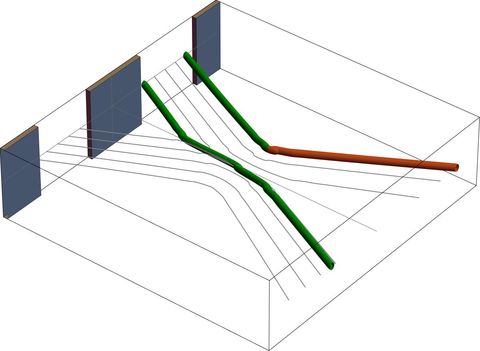
Surrealistic Bohmian trajectories do not occur with macroscopic pointers
Eur. Phys. J. D (2018) 72: 183
Tastevin, Geneviève (LKB) and Laloë, Franck (LKB)
We discuss whether position measurements in quantum mechanics can be contradictory with Bohmian trajectories, leading to what has been called \textquotedblleft surrealistic trajectories\textquotedblright\ in the literature. Previous work has considered that a single Bohmian position can be ascribed to the pointer. Nevertheless, a correct treatment of a macroscopic pointer requires that many particle positions should be included in the dynamics of the system, and that statistical averages should be made over their random initial values. Using numerical as well as analytical calculations, we show that these surrealistic trajectories exist only if the pointer contains a small number of particles; they completely disappear with macroscopic pointers. With microscopic pointers, non-local effects of quantum entanglement can indeed take place and introduce unexpected trajectories, as in Bell experiments; moreover, the initial values of the Bohmian positions associated with the measurement apparatus may influence the trajectory of the test particle, and determine the result of measurement. Nevertheless, a detailed observation of the trajectories of the particles of the pointer can still reveal the nature of the trajectory of the test particle; nothing looks surrealistic if all trajectories are properly interpreted.
arXiv:1802.03783
DOI : 10.1140/epjd/e2018-90129-4
Keywords: Quantum-mechanics; Bohmian mechanics; measurement theory.

Modified Schrödinger dynamics with attractive densities
Eur. Phys. J. D (2015) 69: 162
Laloë, Franck (LKB)
The linear Schrödinger equation does not predict that macroscopic bodies should be located at one place only, or that the outcome of a measurement shoud be unique. Quantum mechanics textbooks generally solve the problem by introducing the projection postulate, which forces definite values to emerge during measurements; many other interpretations have also been proposed. Here, in the same spirit as the GRW and CSL theories, we modify the Schr¨odinger equation in a way that efficiently cancels macroscopic density fluctuations in space. Nevertheless, we do not assume a stochastic dynamics as in GRW or CSL theories. Instead, we propose a deterministic evolution that includes an attraction term towards the averaged density in space of the de Broglie-Bohm position of particles, and show that this is sufficient to ensure macroscopic uniqueness and compatibility with the Born rule. The state vector can then be seen as directly related to physical reality.
Keywords: Quantum-mechanics; spontaneous localization; current situation; hilbert-space; state; reduction; systems
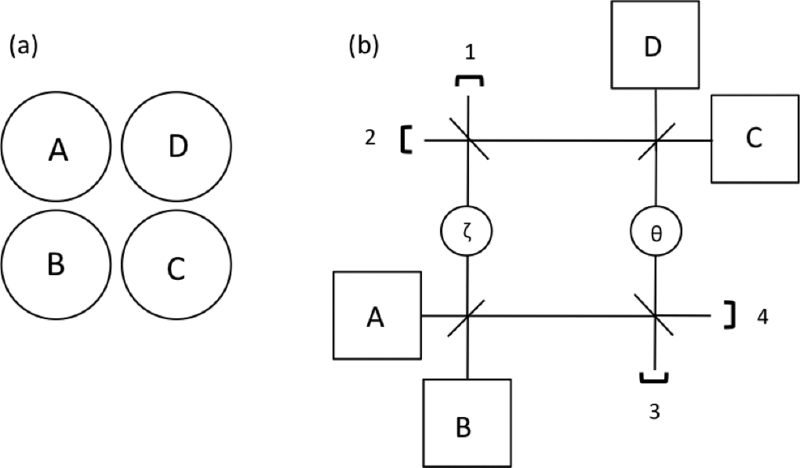
Interference effects in potential wells
Phys. Rev. A 91, 053629 (2015)
Laloë, Franck (LKB), Mullin, William J. (Univ Massachusetts, Amherst, MA, USA)
We propose using an array of potential wells as an interferometer in which the beam splitters are provided by tunneling during an appropriate time through the barrier between wells. This arrangement allows demonstration of generalized Hong-Ou-Mandel effects with multiple particles traversing one or several beam splitters. Other interferometer effects can occur, including a violation of the Bell-Clauser-Horne-Shimony-Holt form of the Bell inequality. With interactions, one sees various effects, including so-called fermionization, collective tunneling, and self-trapping.
Keywords: Beam splitter; quantum gases; atoms; interferometry; microscope; photons
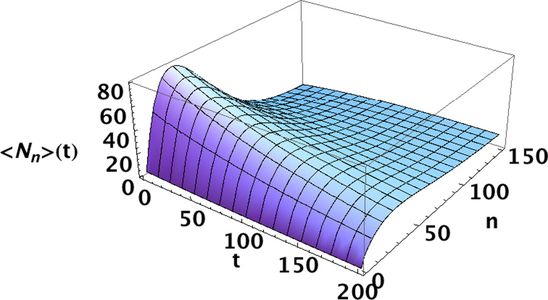
Heating of trapped ultracold atoms by collapse dynamics
Phys. Rev. A 90, 052119 (2014)
Laloë, Franck (LKB), Mullin, William J. () ; Pearle, Philip (Hamilton Coll, Clinton, NY, USA)
The continuous spontaneous localization (CSL) theory alters the Schrodinger equation. It describes wave-function collapse as a dynamical process instead of an ill-defined postulate, thereby providing macroscopic uniqueness and solving the so-called measurement problem of standard quantum theory. CSL contains a parameter lambda giving the collapse rate of an isolated nucleon in a superposition of two spatially separated states and, more generally, characterizing the collapse time for any physical situation. CSL is experimentally testable, since it predicts some behavior different from that predicted by standard quantum theory. One example is the narrowing of wave functions, which results in energy imparted to particles. Here we consider energy given to trapped ultracold atoms. Since these are the coldest samples under experimental investigation, it is worth inquiring how they are affected by the CSL heating mechanism. We examine the CSL heating of a Bose-Einstein condensate (BEC) in contact with its thermal cloud. Of course, other mechanisms also provide heat and also particle loss. From varied data on optically trapped cesium BECs, we present an energy audit for known heating and loss mechanisms. The result provides an upper limit on CSL heating and thereby an upper limit on the parameter lambda. We obtain. lambda less than or similar to 1(+/- 1) x 10(-7) s(-1).
Keywords: Wave-function collapse; spontaneous localization; spontaneous radiation; macroscopic systems; unified dynamics; gas; models; condensation; collisions; reduction
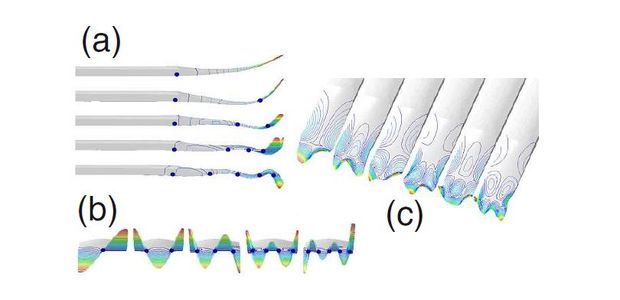
Statistical Estimation of Mechanical Parameters of Clarinet Reeds Using Experimental and Numerical Approaches
Acta Acustica united with Acustica, Vol. 100 (2014), 555-573
Taillard, Pierre-Andre (Conservatoire Mus. Neuchatelois, La Chaux De Fonds, Switzerland) ; Laloe, Franck (LKB) ; Gross, Michel (Univ Montpellier, Lab Charles Coulomb, UMR 5221, Montpellier) ; Dalmont, Jean-Pierre (Univ Maine, Acoust Lab, UMR 6613, Le Mans, France) ; Kergomard, Jean (Aix Marseille Univ, Cent Marseille, Lab Mecan & Acoust, UPR 7051, Marseille)
A set of 55 clarinet reeds is observed by holography, collecting 2 series of measurements made under 2 different moisture contents, from which the resonance frequencies of the 15 first modes are deduced. A statistical analysis of the results reveals good correlations, but also significant differences between both series. Within a given series, flexural modes are not strongly correlated. A Principal Component Analysis (PCA) shows that the measurements of each series can be described with 3 factors capturing more than 90% of the variance: the first is linked with transverse modes, the second with flexural modes of high order and the third with the first flexural mode. A forth factor is necessary to take into account the individual sensitivity to moisture content. Numerical 3D simulations are conducted by Finite Element Method, based on a given reed shape and an orthotropic model. A sensitivity analysis revels that, besides the density, the theoretical frequencies depend mainly on 2 parameters: E-L and G(LT). An approximate analytical formula is proposed to calculate the resonance frequencies as a function of these 2 parameters. The discrepancy between the observed frequencies and those calculated with the analytical formula suggests that the elastic moduli of the measured reeds are frequency dependent. A viscoelastic model is then developed, whose parameters are computed as a linear combination from 4 orthogonal components, using a standard least squares fitting procedure and leading to an objective characterization of the material properties of the cane Arundo donax.
Keywords: Arundo-Donax L.; Acoustic Properties; Holography
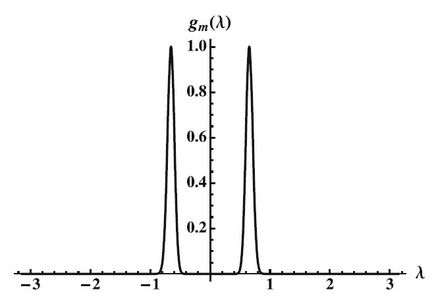
Angular momentum conservation in measurements on spin Bose-Einstein condensates
Eur. Phys. J. D 68 (2014) 47
Franck Lalöe (LKB), Mullin, William J. (Univ Massachusetts, Amherst, MA, USA)
We discuss a thought experiment where two operators, Alice and Bob, perform transverse spin measurements on a quantum system; this system is initially in a double Fock spin state, which extends over a large distance in space so that the two operators are far away from each other. Standard quantum mechanics predicts that, when Alice makes a few measurements, a large transverse component of the spin angular momentum may appear in Bob’s laboratory. A paradox then arises since local angular momentum conservation seems to be violated. It has been suggested that this angular momentum may be provided by the interaction with the measurement apparatuses. We show that this solution of the paradox is not appropriate, so that another explanation must be sought. The general question is the retroaction of a quantum system onto a measurement apparatus. For instance, when the measured system is entangled with another quantum system, can its reaction on a measurement apparatus be completely changed? Is angular momentum conserved only on average over several measurements, but not during one realization of the experiment?
Keywords: Quantum-mechanical operators
Books
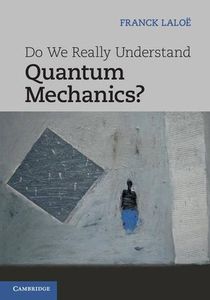
Do We Really Understand Quantum Mechanics?
Franck Laloë
Cambridge Univ. Press, 2012, 406 pp.
ISBN 9781107025011
Cet ouvrage en français :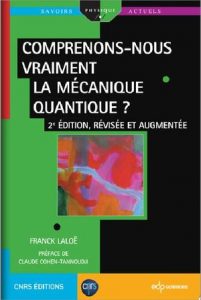
EDP Sciences (Collection Savoirs Actuels), 2nd edition, Jan. 2018
EAN13 (Paperback) : 9782759821846
EAN13 (eBook [PDF]) : 9782759821853
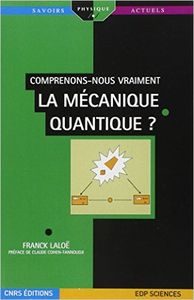
EDP Sciences (Collection Savoirs Actuels), 2011
ISBN 2759806219
Symétries continues
Franck Laloë
EDP Sciences – collection Savoirs Actuels, 2021.
533 p., ISBN 978-2-7598-2631-5 (in French)
Description
Ces considérations de symétrie permettent de comprendre l’origine de la masse et du spin et d’établir des équations d’onde comme l’équation de Schrödinger ou celle de Dirac à partir du groupe d’invariance choisi : Galilée ou Lorentz. Ces équations permettent de décrire les particules de spin 1/2 et prédisent correctement leur moment magnétique anormal.
Cet ouvrage, issu d’un cours de DEA de Physique théorique de l’ENS, a à la fois un caractère fondamental et appliqué. L’utilisation des symétries, et en particulier de celle de rotation, est un outil pratique permettant une approche géométrique de problèmes comme le théorème de Wigner-Eckart ou les opérateurs tensoriels irréductibles. Enfin le livre discute de deux symétries discrètes, la parité et le renversement du temps.
Mécanique quantique - Tomes I et II
Nouvelle édition
Claude Cohen-Tannoudji, Bernard Diu, Franck Laloë
EDP Sciences – collection Savoirs Actuels, 2018.
Tome 1: 930 p., ISBN 2759822877
Tome 2: 1606 p., ISBN 2759822869
Mécanique quantique - Tome III
Fermions, bosons, photons, corrélations et intrication
Claude Cohen-Tannoudji, Bernard Diu, Franck Laloë
EDP Sciences – collection Savoirs Actuels, 2017, 776 p.
ISBN 978-2759821075
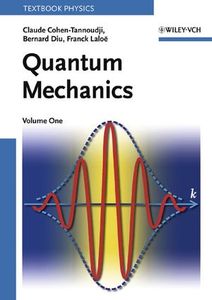
Quantum Mechanics
(2 Volume Set)
Claude Cohen-Tannoudji, Bernard Diu, Franck Laloë
Wiley, 2006, 1524 pp.
ISBN: 978-0-471-56952-7
Ces ouvrages en français:
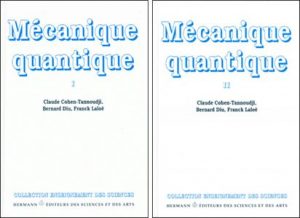
Mécanique quantique (Tomes 1 et 2)
Publiés chez Hermann
Other publications
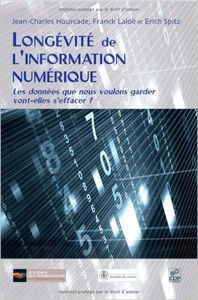
Longévité de l’information numérique
Les données que nous voulons garder vont-elles s’effacer ?
Jean-Charles Hourcade, Franck Laloë, Erich Spitz
EDP Sciences, 2010, 106 p.
ISBN 978-2-7598-0509-9
Rapport du groupe “Pérennité des supports numériques” (Académie des sciences / des technologies)
Presentation par Yves Desrichard (BBF, 2011, n° 1, p. 91-92 – ISSN 1292-8399).

